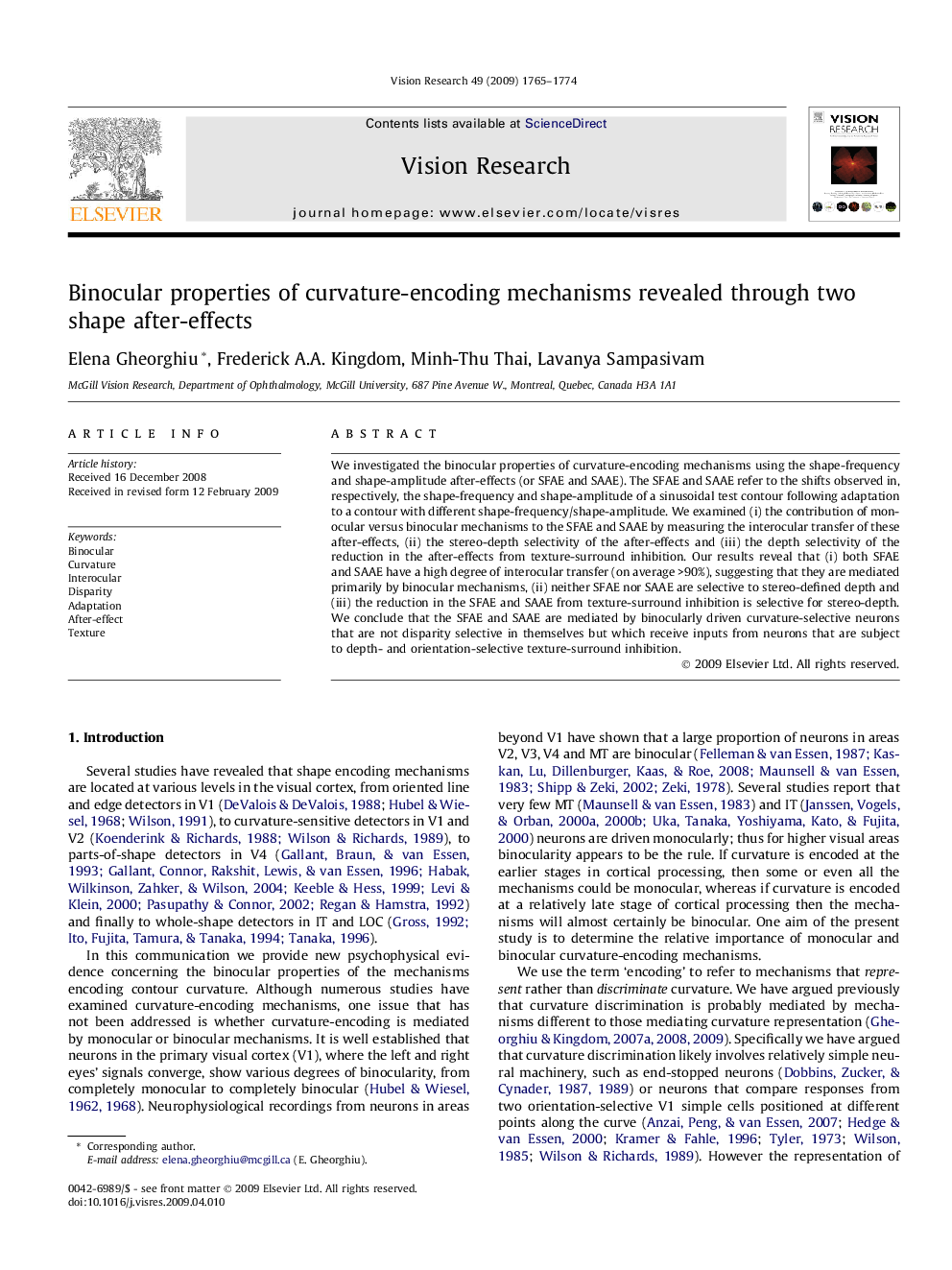| Article ID | Journal | Published Year | Pages | File Type |
|---|---|---|---|---|
| 4035256 | Vision Research | 2009 | 10 Pages |
We investigated the binocular properties of curvature-encoding mechanisms using the shape-frequency and shape-amplitude after-effects (or SFAE and SAAE). The SFAE and SAAE refer to the shifts observed in, respectively, the shape-frequency and shape-amplitude of a sinusoidal test contour following adaptation to a contour with different shape-frequency/shape-amplitude. We examined (i) the contribution of monocular versus binocular mechanisms to the SFAE and SAAE by measuring the interocular transfer of these after-effects, (ii) the stereo-depth selectivity of the after-effects and (iii) the depth selectivity of the reduction in the after-effects from texture-surround inhibition. Our results reveal that (i) both SFAE and SAAE have a high degree of interocular transfer (on average >90%), suggesting that they are mediated primarily by binocular mechanisms, (ii) neither SFAE nor SAAE are selective to stereo-defined depth and (iii) the reduction in the SFAE and SAAE from texture-surround inhibition is selective for stereo-depth. We conclude that the SFAE and SAAE are mediated by binocularly driven curvature-selective neurons that are not disparity selective in themselves but which receive inputs from neurons that are subject to depth- and orientation-selective texture-surround inhibition.
